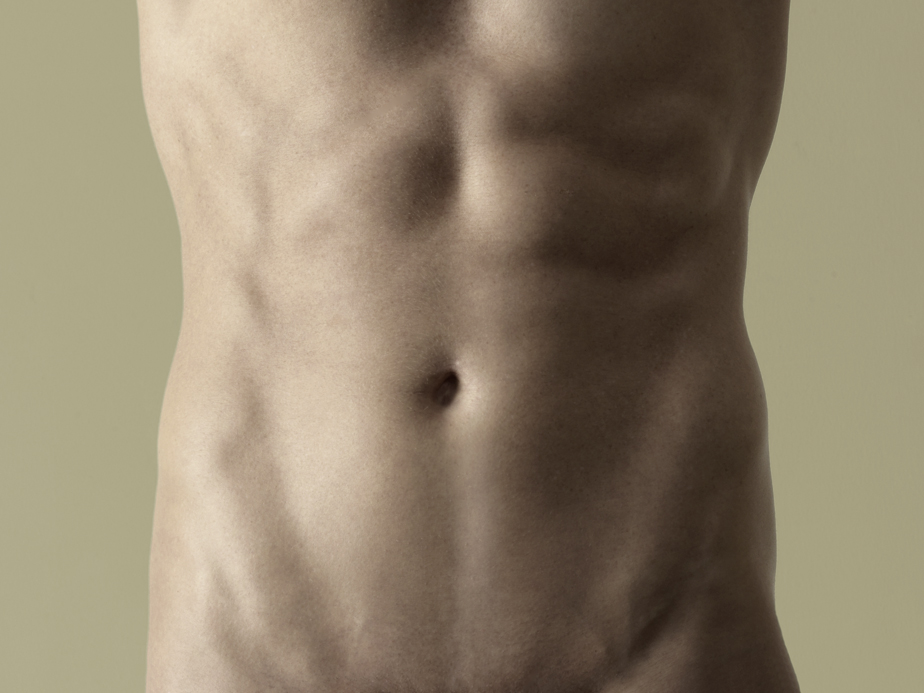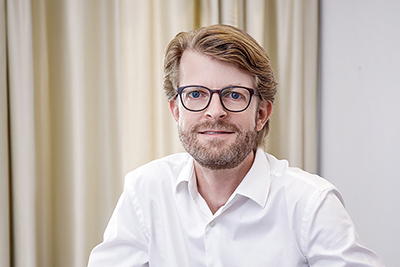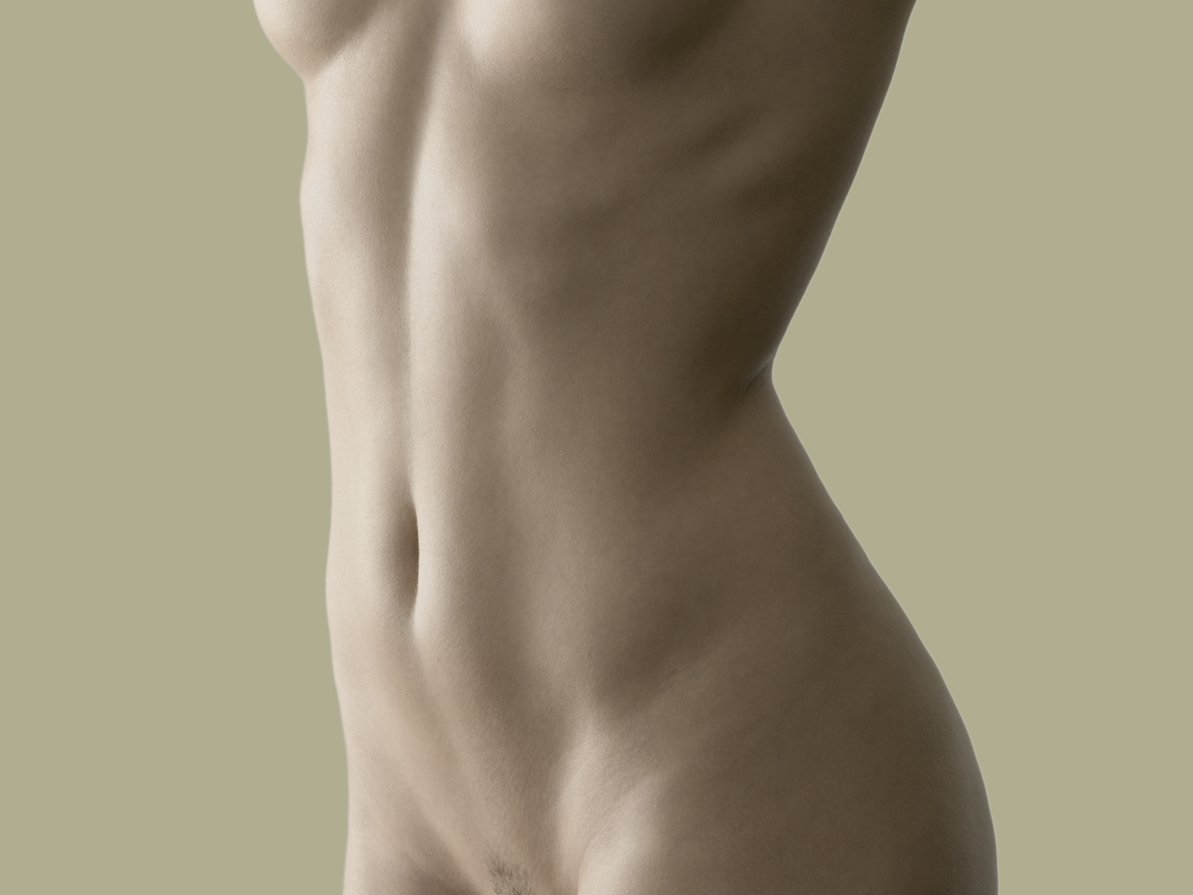
Tummy tucks (abdominoplasty) can flatten your abdomen by removing excess skin and fat and tightening the muscles of the abdominal wall. Women who have loose skin and fat deposits on their abdomen can benefit from having an abdominoplasty. Abdominal changes are often age related, but may also be due to hereditary factors, weight fluctuations or substantial weight loss. After pregnancy, the abdominal skin can remain overstretched and loose and the abdominal muscles can separate in the midline (diastasis recti). In this case, surgery involves the re-approximation and tightening of abdominal muscles by internal sutures. By tightening the skin stretch marks can also be removed, particularly in the region below the navel. An abdominoplasty improves the abdominal contour thus improving the fit of clothing.

Considerations
When to consider abdominoplasty:
- You have excess or loose skin in the abdominal area.
- You have pronounced stretch marks on the lower abdomen and loose skin on the upper abdomen.
- You have fatty deposits on the abdomen that hang down (‘fat apron’).
- Your tummy protrudes and is out of proportion to the rest of the body.
- Your abdominal muscles are weakened (e.g. after pregnancy or weight loss)
- Your wellbeing and self-esteem is affected by the changes of your belly.
A tummy tuck is the removal of local skin and excess fat on the abdomen that can’t be eliminated by other measures. It is possible to perform the operation at any age, as long as there are no serious underlying medical conditions that might increase the risk of surgery. The prerequisite for a tummy tuck is a stable body weight, as strong weight fluctuations may affect the result of surgery. A desired pregnancy or planned weight loss should be considered before a tummy tuck. Scars on the abdomen by previous surgery or caesarean section have to be taken into consideration in the surgical planning and can limit the scope of a tummy tuck. Severe obesity may be a contraindication for abdominoplasty or increase the risk of surgery and significantly affect the expected result. A tummy tuck is not a suitable method for weight loss, although several kilograms of skin and fat can be removed. Severe lung disease can limit the feasibility of a tummy tuck.
Consultation
A prerequisite to a successful operation is careful planning. This starts with a personal consultation at the AARE KLINIK.
- Communication of wishes and expectations ascertain what you would like to improve.
- Explanation of the possibilities and scope of the operation.
Examination:
- Medical history is taken.
- The abdomen is examined while standing and lying down.
- The firmness and elasticity of the abdominal skin, the amount of excess skin and the thickness of the fatty tissue are determined.
- The strength of the abdominal wall muscles is checked.
- The abdomen is examined for any weaknesses and protrusions (hernia) and the presence of increased fatty tissue in the abdominal cavity, as this could complicate surgery or affect the surgical result.
- Digital photos are taken.
- Individual factors and personal wishes help in jointly deciding the choice of the appropriate surgical technique, the position of incisions and the resulting scars.
- Based on this, an individual treatment plan is drawn up and goals of the operation are discussed and defined.
- Risks and possible complications are discussed and documented.
To plan the operation and to make a risk assessment we require:
- Full medical history (pre-existing conditions and previous surgery).
- Current diseases (high blood pressure, diabetes, thyroid dysfunction, etc.).
- Allergies or aversion to medications.
- Any important medical reports (please bring any important medical information).
- If you are intending to lose a significant amount of weight or to get pregnant, this should be considered when planning a tummy tuck.
- It may be advisable to wait for the stabilisation of your weight or after pregnancy before surgery is undertaken.
Procedure
Individual factors and personal preferences determine the choice of the surgical technique.
There are two options: tightening the lower abdomen without moving the navel (‘mini-abdominoplasty’) or tightening the upper and lower abdomen, in which the navel is moved (full abdominoplasty). The former is suitable for a tightening of the skin below the navel while the latter also allows a tightening of the skin above the navel. Excess skin is removed in a transverse elliptical pattern and the remaining abdominal skin is tightened from top to bottom. The resulting transverse scar on the lower abdomen can be concealed by clothing. The exact position of the scar varies between individuals and depends on the preferred style of dress and personal preferences. The scar generally runs from the upper margin of the pubic region, sideward to the iliac crest. The length of the scar depends on the extent of the removed skin. The position of the navel can be maintained or corrected, if desirable. In individual cases it may be useful to stretch the abdominal skin in the opposite direction, i.e. to tighten from bottom to top (inverse abdominoplasty). Excess skin is then removed from the upper abdomen and the scar is concealed in the crease below the breast. If there is a great amount of excess skin, then in addition to the vertical tightening, a transverse tightening with a midline scar may be required (‘fleur-de-lis abdominoplasty’). Here, the advantages of a better abdominal contour must be weighed up against the disadvantages of a longer scar. Stretch marks after pregnancy or due to massive weight loss can be removed or optically enhanced by tightening the skin, but cannot always be completely removed. Loose or separated abdominal muscles (diastasis recti) can be re-approximated and the abdominal wall reinforced by inner sutures. This serves to improve the abdominal contour and the abdominal wall function. Excess fat on the abdomen can be partially eliminated by liposuction alone, or in combination with a tummy tuck (lipoabdominoplasty). In individual cases where there is not a significant amount of excess skin or fat, endoscopically assisted abdominoplasty is performed with minimal scars. To achieve the best results, the various options will be discussed as part of the consultation.
A tummy tuck is usually performed under general aesthesia as an outpatient procedure at the AARE KLINIK or as part of a short hospital stay. The surgery usually takes 2–3 hours. Drains are inserted at the end of the operation, to remove blood and wound fluid during the first few days after surgery.
Risks
Tummy tucks are among the most common cosmetic surgeries. Complications, such as infection, healing problems or circulatory disorders of the skin are rare when surgery is conducted with the proper procedures. However, in individual cases a prolonged treatment or another operation may be required. Every patient should be informed of all the benefits, risks and possible complications involved.
Minor complications and side effects that usually resolve spontaneously include: bruising (hematoma), wound fluid accumulation (seroma) and swelling. Severe hematoma or seroma may require surgical evacuation to prevent further complications, such as delayed healing and infection. Some numbness of the abdominal skin is common after abdominoplasty, but is usually temporary and improves with time.
The risk of severe complications such as circulatory disorders of the abdominal skin and wound healing problems along the suture lines is increased in smokers or patients with chronic diseases, such as diabetes. Combined interventions also increase the risk of complications.
General risks
- Haematoma (bruising), bleeding and swelling
- Seroma (accumulation of wound fluid)
- Healing problems or infection
- Wound breakdown/dehiscence (separation of wound edges)
- Injury of nerves or vessels
- Numbness in area of operation (temporary or permanent)
- Circulatory problem in the abdominal skin (skin slough)
- Slight asymmetry
- Unsatisfactory aesthetic result
- Secondary surgery
- Thrombosis or embolism
Overall tummy tucks are a safe procedure when undertaken by an experienced plastic surgeon and patients are mostly satisfied with the results. You can help to minimise the risks by following the advice of your surgeon.
Preparation
Our aim is to make the time before and after your surgery as comfortable as possible. By following a few recommendations you can support our care:
- To aid the healing process, avoid smoking for two weeks before and after the operation.
- Avoid medications that increase the risk of bleeding, like aspirin, non-steroidal anti-inflammatory drugs, as well as vitamins and homeopathic remedies for two weeks prior to the operation.
- Tummy tucks are mostly performed as an outpatient procedure under general anaesthesia. Make sure that you can be collected and cared for by someone for 24 hours after the procedure.
- In some cases (e.g. if a tummy tuck is done in combination with a hysterectomy or hernia repair) it may be recommended to stay overnight as an inpatient in hospital.
Day of surgery
In most cases, abdominoplasty is performed under general anaesthesia as an outpatient procedure or with an over-night stay at the AARE KLINIK. In individual cases, when necessary, the procedure can be undertaken in an affiliated private hospital.
- During surgery you will receive various medications for your wellbeing.
- For your safety, your heart rate, blood pressure, oxygen supply etc. are monitored during the operation.
- After the operation, drains are usually inserted to prevent the accumulation of blood and serous fluid in the wound.
- The wound is dressed and a compression bandage is applied to protect the wound and to reduce the swelling.
- You will be taken to the recovery room, where you will have continued monitoring until you awaken and are able to get up.
- You will be allowed to return home after a few hours.
- If you are an inpatient, you will remain in hospital under surveillance until the following day.
- Already on the day of the surgery you should get up regularly for a few minutes in order to minimise the risk of thrombosis.
- The level of pain after a tummy tuck is usually not severe and can be compared with muscle soreness.
- You are advised to take mild pain relief that reduces swelling and should be continued for several days after surgery.
- In case of an ambulatory procedure, you should have someone to care for you continuously for 24 hours postoperative.
- We also provide the option of an over-night inpatient stay at the AARE KLINIK in a single room with a personal nurse care, if needed.
After surgery
- It is important to realise that recovery from an operation varies for every individual.
- You should rest in the first days after a tummy tuck.
- Do not stretch or bend the abdomen and do not lift heavy objects.
- Only take the prescribed painkillers and avoid any medication that contains aspirin or other blood-thinning substances.
- Even if you cannot stand fully upright at first, you should avoid sitting for prolonged periods during the first few days.
- You should sleep on the back for several days with slightly bent hips and a pillow under the legs.
- Wear the compression bandages continuously day and night.
- In the first 2–5 days after the procedure, a feeling of tension and light pain will be felt in the region of the surgery.
- Abdominal skin may feel temporarily numb and hypersensitive. This is usually temporary. However, it may take weeks or months, in some cases even longer to return to feeling completely normal.
- Slight swelling and bruising in the area of surgery usually subsides within 2–3 weeks.
- Typically you will be back on your feet a couple of days after surgery and be able to resume your daily activities.
- Drains are removed in the first days after the operation, after which you can take showers again.
- Full baths and excessive heat (e.g. sauna), however should be avoided for several weeks until swelling has receded.
- Most sutures will dissolve by themselves and do not need to be removed.
- Non-dissolvable sutures are removed after one week.
- After removal of the sutures, we recommend the start of an intensive skin and scar care with rehydrating creams and light massage.
- In individual cases it may be useful to have special treatment with silicone gel or silicone pads over a period of 2–3 months.
- The fresh scars should be protected from UV radiation for at least six months, in order to prevent increased pigmentation.
- Activities that require prolonged sitting can usually be resumed after 2–3 weeks.
- Compression bandages should be worn for a total of 4–6 weeks.
- Physically demanding activities and sport should be avoided for several weeks.
- After surgery you will be examined at the AARE KLINIK at regular intervals, so that the healing process can be assessed until the final result is achieved.
Outcome
- Swelling and bruising may remain for some time after surgery.
- The healing process is gradual and it takes several months before the final result can be conclusively determined.
- Scars might be red or appear darker pigmented for several months, but this colour will fade with time.
- Scars are easy to conceal under clothing.
- Swollen (hypertrophic) scars may require treatment with special silicone pads and cortisone injections.
- After a tummy tuck, women often feel more self-confident and find it easier to wear certain clothes.
- The result of a tummy tuck is usually long lasting.
- Gravity, the aging process, weight fluctuations, pregnancy and lifestyle continue to affect the outcome over time.
- If you are unhappy after a few years, another tummy tuck can be performed.
Costs
Tummy tucks are usually an aesthetic procedure, in which case the costs have to be carried by the patient. In exceptional cases, where there is functional impairment, (e.g. chronic infection or pain) the surgical correction is medically indicated. In these cases, the treatment costs may be covered by health insurance after a prior cost estimation is given. In patients with an abdominal wall hernia, who choose to have a tummy tuck at the same time, part of the costs of the operation will be covered by health insurance. The decision for, or against reimbursement depends on the recommendation of the medical officer in each individual case.
The costs of an aesthetically motivated abdominoplasty are variable and mainly depend on the complexity of the operation and the facility in which the surgery is performed (hospital or AARE KLINIK). A more accurate cost estimate can therefore be made only after a personal consultation.
The costs are composed of:
- Surgical fee (including consultation and post-operative care)
- Anaesthesia fee
- Technical infrastructure costs (AARE KLINIK/hospital)
- Inpatient hospital costs
- Compression garment
- Medication
- Diagnostics (laboratory, ECG, scans, etc.)
Meet PD Dr. med. Oliver Scheufler

Dr. med. O. Scheufler, specialist in plastic, reconstructive and aesthetic medicine and author of this website, is pleased to be at your service for a personal consultation. Besides his main work at the Aare Clinic, PD. Dr. Scheufler is also scientifically active and has habilitated at the University Hospital of Basel. He was therefore awarded the title of assistant professor by the University of Basel. In addition, he was honored by Duke University (USA) as a Visiting Professor. So do not hesitate to contact him if you wish a professional consultation!



